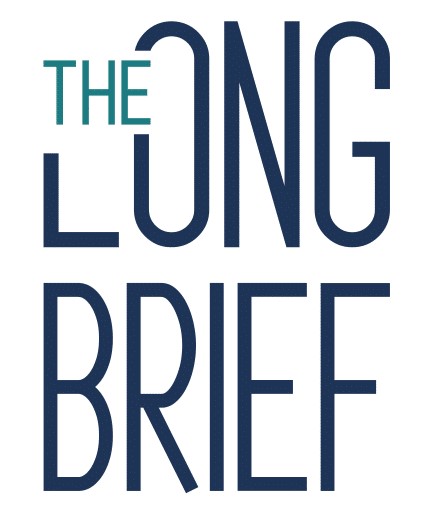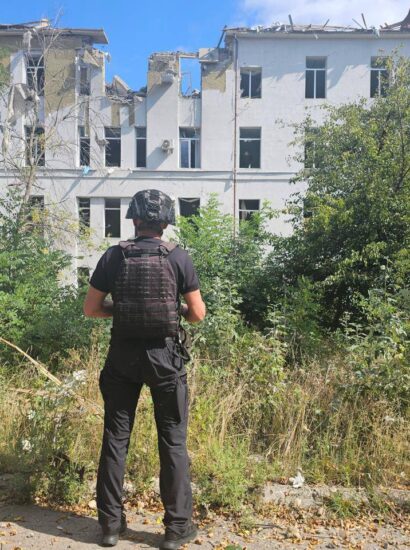For those involved in foreign policy, Australia often appears as a somewhat lost behemoth, balancing between conflicting great powers. Nevertheless, with the announcement of Australian AUKUS (a trilateral security partnership between Australia, the United Kingdom, and the United States – the editor), the country demonstrated its commitment to the Western community and expressed bold ambitions. However, there are numerous obstacles standing in the way of achieving these goals. During a visit to Melbourne, the social dynamics seem particularly striking, and official figures underline the problem.
In downtown Melbourne, the historicist State Library Victoria hosts an exhibition by Australian photographer Rennie Ellis. Ellis (1940–2003) devoted his career to capturing Melbourne’s vibrant social life. His work features pubs, horse racing, sporting events, the iconic St. Kilda Beach, and rallies from countless subcultures. His photographs depict a highly liberal society in an era when “liberal” did not necessarily imply political alignment.

Photo: Viktor Buzna
Melbourne has changed a lot since then. It remains a highly liberal city in many positive ways but is now more multiethnic than multicultural. Immigration from East Asia has had a significant impact on the city’s atmosphere, making it feel more akin to Hong Kong than London.
Ethnic Tensions and Labor Shortages
The growing population and ethnic diversity have led to some tensions. Recently, pro-Palestinian/anti-Israel protests escalated into violent clashes with police. Last year, 737 000 people migrated to Australia, a 73 percent increase compared to 2022. On the other hand, 223 000 people left the country, a more significant issue than minor ethnic tensions in Melbourne.
Australia is facing a significant skilled labor shortage.
According to recent research by Universities Australia, a nationwide higher education association, the country is short 50 000 engineers, and the shortage of cybersecurity professionals could reach up to 30 000 in the coming years.
Additionally, Australia will need 85 000 more nurses by 2025, and there are reports of a gap of 70 000 electricians.
Australia is grappling with a problem where its economy desperately needs immigration, while society is reaching its tolerance threshold for the massive influx of new arrivals.
This issue extends beyond the economy; it has become a defense concern.
Australia has one of the fastest-growing defense budgets in the world. The country will spend a record USD 36.8 billion on defense in the next fiscal year, equivalent to 2.02 percent of its gross domestic product, representing a 6.3 percent increase from 2023. However, only 30 percent of this budget goes to local defense suppliers, with the majority flowing to foreign companies, mainly American. Australia is determined to change this by boosting its domestic defense industry to become a driving force in the country’s future economy.
Taking Advantage of Necessity – the AUKUS’ Pillars
This strategy is largely built around AUKUS. In September 2021, Australia announced the formation of AUKUS, a trilateral security pact primarily aimed at developing nuclear-powered submarines using American and British technology.
AUKUS has broader geopolitical implications, as it seeks to counter China’s growing influence in the Indo-Pacific region, with the submarine deal being a cornerstone of this strategy.
The pact has two pillars: The first and most well-known involves assisting Australia in acquiring nuclear-powered submarines. The U.S. and the U.K. will provide Australia with the technology and support to develop and operate nuclear-powered, conventionally armed submarines. This initiative is designed to enhance Australia’s naval capabilities, particularly in terms of range, endurance, and stealth, enabling a stronger presence in the Indo-Pacific region.

Royal Australian Navy Petty Officer Craig Phelps conducts a safety briefing prior to dropping anchor aboard the Royal Australian Navy ship HMAS Tobruk (L50)(U.S. Navy photo by Mass Communication Specialist 2nd Class Eddie Harrisond)
The second, less-known pillar focuses on cooperation in advanced defense technologies beyond submarines. This includes collaboration on artificial intelligence (AI), quantum technologies, cybersecurity, underwater systems, long-range strike capabilities, and other emerging defense innovations. The aim is to foster greater technological integration between the U.S., the U.K., and Australia to strengthen their collective military capabilities and address future security challenges, especially in the Indo-Pacific region.
If pillar two succeeds, Australia will become a major player in the fast-evolving global defence market. The forecasts, however, warn of several systemic problems.
According to the Australian Strategic Policy Institute (ASPI), the main vision of Pillar 2 is to implement operational and regulatory frameworks to co-produce, co-field, and continuously enhance world-leading national defence capabilities in critical technology areas. Governments will provide leadership and resources to drive effective multinational collaboration among government, industry and academic contributors, leveraging competitive advantages from across the alliance. Based on interviews and background discussions with Australian business actors, ASPI found that Canberra faces huge challenges in achieving its goals.
Challenges Faced by Businesses
There is a widespread criticism that the concept lacks a clear organizational framework, making it difficult to convert strategic goals into operational execution. This affects industries involved in collaborative research and development, which need defined requirements, funding, and program management.
Legal barriers are also untouched, making difficulties to reach the American market. Export control regulations, particularly the U.S. International Traffic in Arms Regulations (ITAR), create significant barriers.
These regulations delay innovation and complicate cross-border collaborations, as approvals can take up to six months or more.
Differences in classification systems, such as the U.S. “NOFORN” classification, impede collaboration by preventing the seamless sharing of necessary technical data. This makes it difficult for Australian and UK partners to fully integrate into U.S.-led projects. Aligning industrial security standards and technology certification processes among AUKUS partners remains a significant obstacle. These disparities hamper collaboration, especially in fields like electromagnetic systems and hypersonic technologies.
Australia’s lower historical defense R&D funding compared to the U.S. poses another challenge. Australian businesses struggle to compete in U.S. markets due to limited capital, small domestic demand, and complex procurement processes.
Therefore, the report recommends that the government should invest in public-sector capabilities to handle technological and legal aspects of defense, streamlining processes for technical data transfer to enable joint development and aligning export control regulations with international partners. It also suggests to set up governing bodies to navigate uncertainties in the AUKUS framework. These bodies should have the expertise to adjust quickly to changes and manage risks in technological cooperation.
Despite the bureaucratic constraints, ASPI’s report also underlines the importance of the labour issue. There are expertise gaps in the indigenous defence industry, as the Australian workforce currently lacks the depth of expertise needed to meet the demands of Pillar II. Training and education also need to be improved. As the report finds, Australian workers tend to move between roles frequently, while, the workforce demands of AUKUS require deep expertise, particularly in areas like export control compliance. In this environment, companies face difficulties in recruiting staff with the necessary passion and interest to develop a career in highly specialized areas such as export controls and international defense law, further exacerbating labor shortages. In other words, the Australian government has a tremendous job to prepare its society for the role it wants to achieve in the defence market and the geopolitical arena at large.







